Dopamine decor: what is the secret of the new trend in interior design
Categories: Design and Architecture
By Pictolic https://pictolic.com/article/dopamine-decor-what-is-the-secret-of-the-new-trend-in-interior-design.htmlIn recent years, minimalist interiors in subdued colors with a predominance of rectangular-shaped objects have been in fashion. But everything is changing and designers are increasingly paying attention to furniture in bright colors, catchy prints and accessories in the spirit of the 80s. The most extreme manifestation of new trends in the design of residential premises has become the dopamine style, diametrically opposed to the boring Scandinavian minimalism.

Dopamine style, or dopamine decor as it is also called, is a new concept whose goal is to create a special, stimulating, comfortable environment. This principle assumes that the competent use of color, ornaments, shapes, and figurative decorative elements can improve a person’s psychological state and physical well-being.

The emergence of this trend in design is associated with the fact that modern people have recently had to cope with a lot of stress. Even in countries that are considered quite prosperous, the number of people suffering from depression and anxiety disorders is growing every year. Surprisingly, sometimes it’s enough to add an unusually shaped floor lamp or a few bright pillows to your surroundings to feel much better.
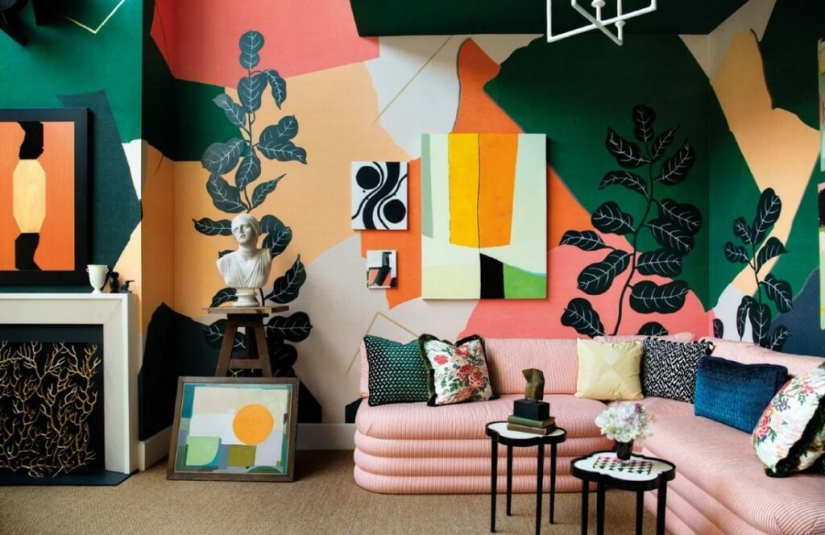
This style, despite the abundance of the most diverse elements, has nothing to do with chaos. All its details are carefully thought out and play their important role. Lamps, furniture, textiles, pillows, decorative elements, garlands and paintings on the walls are chosen by the designer and play a role in the overall composition. Every thing in the room should have emotional meaning for a person.
The dopamine style can be briefly described as an environment permeated with love expressed in things. Designers recommend excluding from the decor any objects that have unpleasant memories associated with them, or are simply boring and not pleasing to the eye. It’s worth noting right away that seemingly “childish” and frivolous dopamine things can be expensive. But the millennial generation has money and is ready to invest it not in luxury goods and cars, but in psychological well-being.
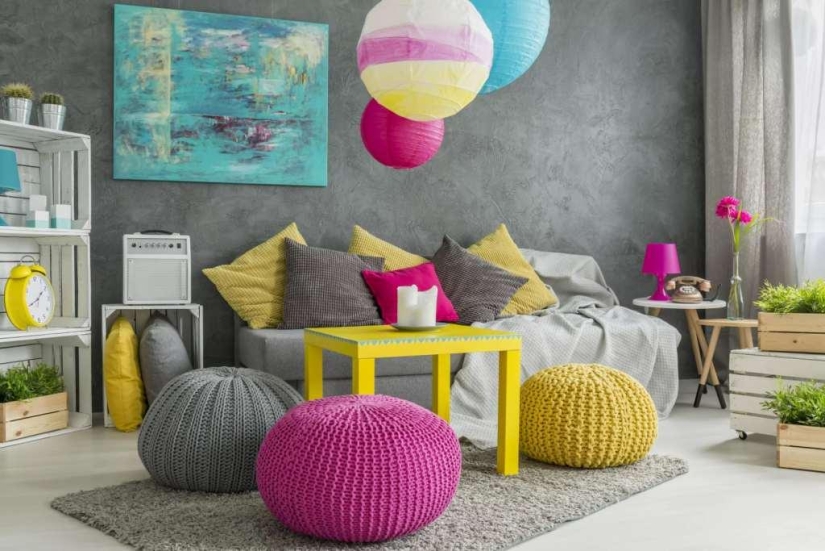
But you can make your home pleasant and joyful even without major financial investments. The easiest option is to add cute, positive little things to your existing environment. This could be anything from a wall clock in the shape of a unicorn to unusual looking candlesticks. All sorts of interesting coasters, bright panels, garlands and even coat hooks and door handles can change everything.
Colors in the interior play an important role in shaping a person’s psychological state. Some people prefer stimulating shades such as orange, yellow and fuchsia. But this is optional. You can also rely on your own preferences. Some people are invigorated by the color red, but there are people for whom it causes anxiety or quickly tires them. Some people literally recharge from the abundance of yellow, while for others a few bright green accessories are enough.
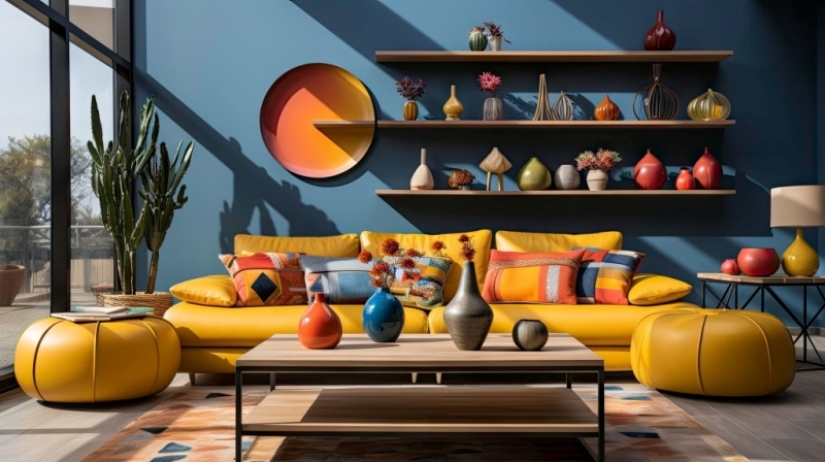
One of the rules of the dopamine style is that there are no strict rules. The main thing is the idea and emotional coloring. Flowers can be combined with a cage, and flower pots can be different. As many bright colors as possible in everything - in textiles, wallpaper, tiles, wall paintings. But individual characteristics must be taken into account. If you quickly get bored of certain colors, then it is better to use textiles, which are the easiest to replace in the interior.
The task of dopamine decors is to relax and please the eye. Therefore, preference is given to soft, streamlined shapes. And we’re not just talking about armchairs, sofas and poufs. Today, without much difficulty, you can find cabinets, tables and chairs with rounded or simply smooth outlines. You can also add softness to your surroundings with the help of pillows. They can come in all kinds of crazy shapes, like clouds, berries, or animals.
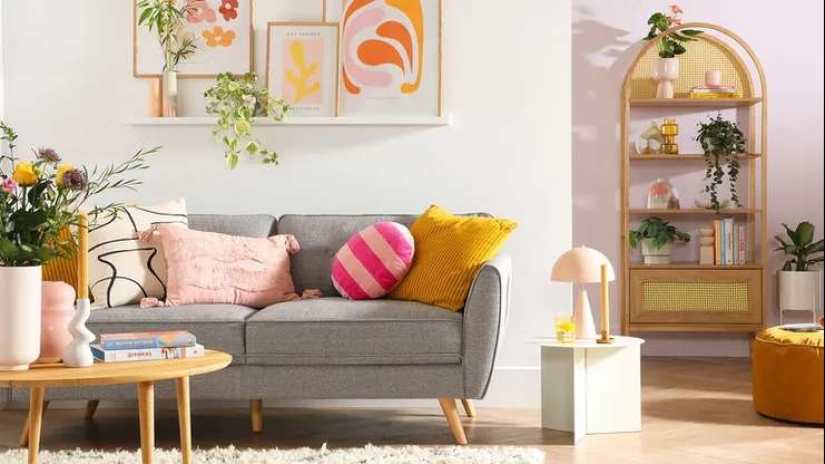
Also, dopamine design brings back long-forgotten carpets to us. But we are not talking about grandmother’s inheritance - it will be relevant for midcentury modern interiors. Carpets with long soft pile, unusual shapes and designs that reference pop culture and animation are trendy.
Not everyone can come to terms with the riot of colors around. In this case, designers recommend using only one wall to increase brightness. It can be decorated with colorful wallpaper, paintings or interesting panels. It all depends on personal preference. Since the dopamine style is directly related to emotions, you can decorate your wall with photographs of pleasant memories. Collections of postcards and children's drawings are also suitable.
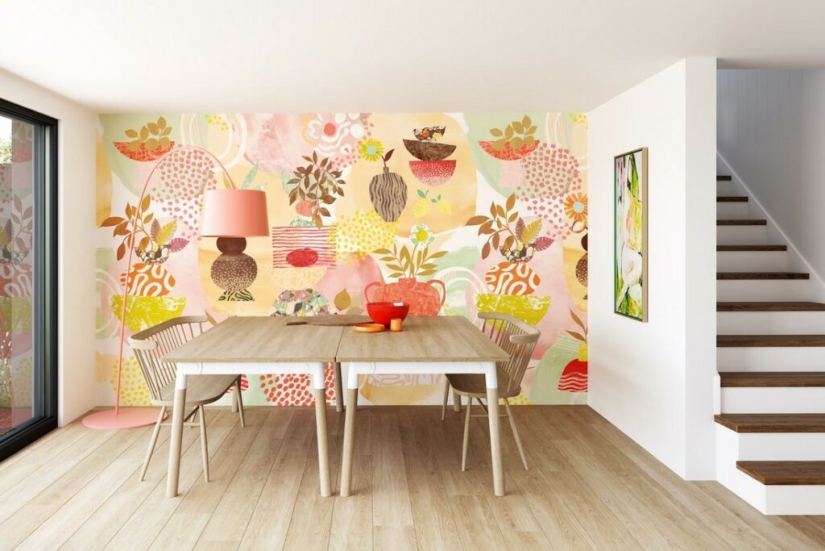
In general, dopamine design encourages the display of all kinds of collections. If you have a hobby related to collecting unusual or simply interesting objects, that’s great. The time has come for their proud display in the most visible place. These are not only soft toys and souvenirs brought from travel. Collections of car or sailboat models are perfect.
Living plants are a good addition to the dopamine interior. They are not only pleasing to the eye. Scientists have long established that caring for them significantly improves their state of mind. There are no rules here either - any representatives of the flora that you like will do. Well, various bright and unusual flower pots and flowerpots will complement the dopamine style of the room well.
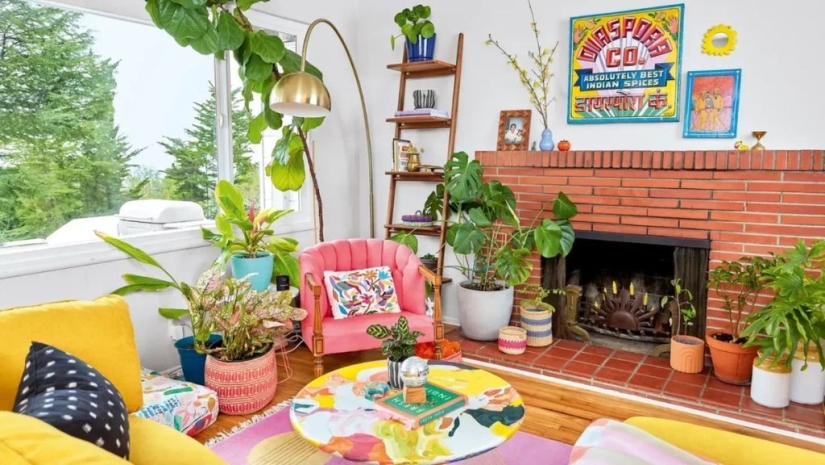
If you love nature, then you can safely combine the dopamine style with another fashion trend known as tropical core. They fit perfectly, complementing each other.
Recent articles

If we talk about multi-faceted talented individuals, then we can safely cite Pavel Vlasov as an example. Although this name won't ...

In the estates of landlords under serfdom, servants of various profiles lived and worked. It was believed that the more servants a ...

New York-based photographer Ryan McGinley is known for his unusual, heart-wrenching projects. His series "Kiss and Make ...